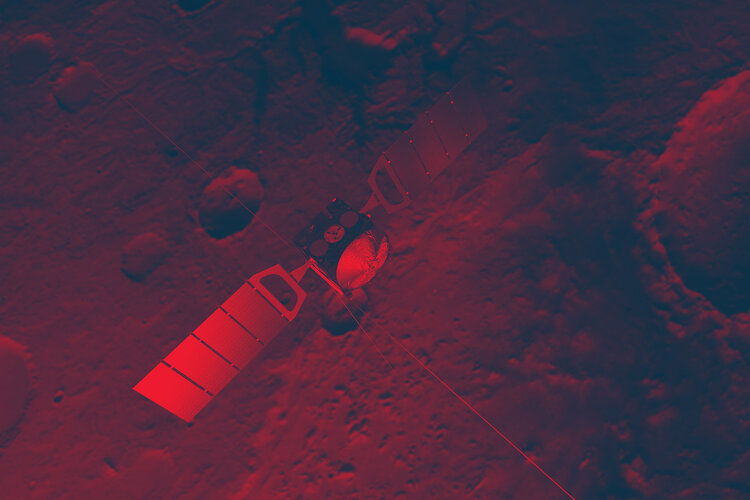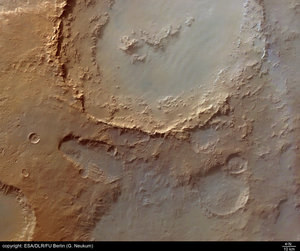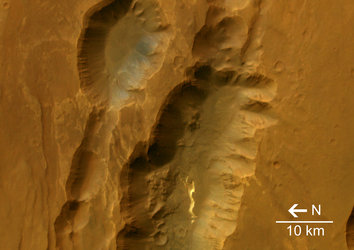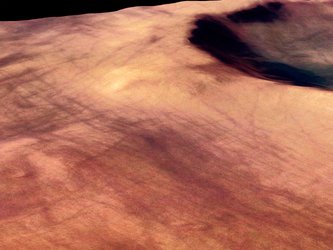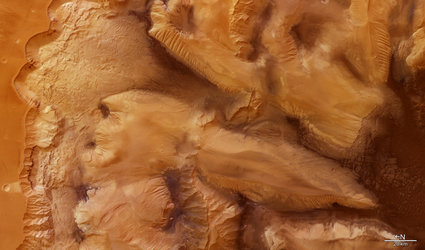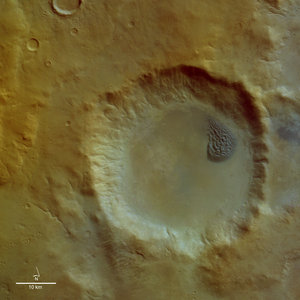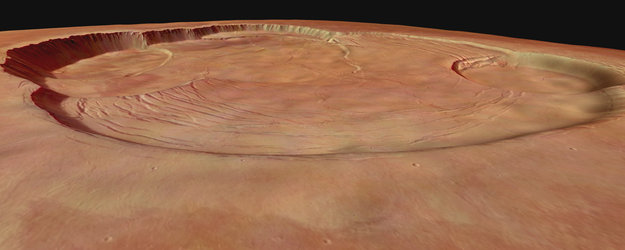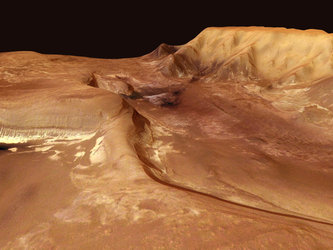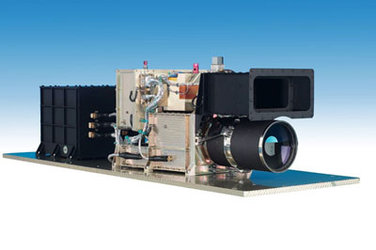Coprates Catena’s ‘collapsed’ structures
These images, taken by the High Resolution Stereo Camera (HRSC) on board ESA’s Mars Express spacecraft, show the detailed structure of Coprates Catena, a southern part of the Valles Marineris canyon system on Mars.

The images were taken during orbit 438 with a ground resolution of approximately 43 metres per pixel. The displayed region covers an area centred at about latitude 14° South and longitude 301° East.

Coprates Catena is a chain of collapsed structures, which run parallel to the main valley Coprates Chasma.
These collapsed structures vary between 2500 and 3000 metres deep, which is far less than the depth of the main valley at 8000 metres. A few landslides can be seen on the valley walls.
The valley chains have no connection to the lowland plains as compared to the main valleys. This indicates that their origin is solely due to the expansion of the surface, or collapse, with removal of underlying material (possibly water or ice).
On the valley floor, brighter layers are exposed, which could be material of the same composition as seen in other parts of Valles Marineris, where sulphates have been measured by the OMEGA spectrometer instrument on board Mars Express.

Image resolution has been decreased for use on the internet. The colour images were processed using the HRSC nadir (vertical view) and three colour channels.
The perspective views were calculated from the digital terrain model derived from the stereo channels.

The 3D anaglyph image was created from the nadir channel and one of the stereo channels. Stereoscopic glasses are needed to view the 3D image.
For more information on Mars Express HRSC images, you might like to read our updated 'Frequently Asked Questions'.




